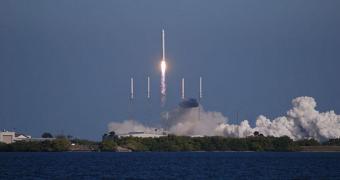When the Falcon 9 rocket carried the unmanned Dragon space capsule to space last December, representatives from Space Exploration Technologies Corporation (SpaceX) were delighted about their success. However, they are now admitting that the delivery system suffered a glitch during the flight.
Until now, Falcon 9 flew twice. Its successful maiden flight occurred in June 2010, and in December the same year it took its first trip to space carrying Dragon. The latter managed to complete several orbits around the planet, before finally landing in the Pacific Ocean.
At the time, shortly after SpaceX became the first non-state entity to achieve this performance, no one really paid attention to the rocket, since most were focused on the cargo capsule and what it implied.
But now experts took a closer look at the performances Falcon 9 displayed, and found a clear error in its flight. According to analysts, the failure could have produced a catastrophe, and it was only through luck that nothing blew up.
SpaceX officials say that they are now aware of the problem, and that they will take the appropriate measures to ensure nothing like this happens again. The company is poised to fulfill its part of the agreements signed with the American space agency.
The company is one of the four final selections for the Commercial Crew Development (CCDev) program NASA sponsors. Under the terms of these contracts, the corporations need to develop rockets and capsules capable of resupplying the International Space Station (ISS) as soon as possible.
In a September 9 interview, SpaceX’s vice president of astronaut safety and mission assurance, Ken Bowersox, explained that the error was an oxidizer-rich shutdown. “So because of that, when you get that mixture change happening, the temperatures can go up higher than you want inside the gas generator,” he said.
“Those temperatures could have damaged the turbines in the turbopump,” added the expert, who is a former NASA astronaut himself. The damage could have extended to either of the nine Merlin engines that power the Falcon 9, Space reports.
“This information was presented to NASA and to the [Federal Aviation Administration] not too long after the mission. But it didn’t go to the Aerospace Safety Advisory Panel, it went to some of the different NASA programs that we work with,” Bowersox said.
SpaceX now plans to search for and remedy the source of the problem, so that future Falcon 9 flights later this year or early in 2012 can take place under better auspices.

 14 DAY TRIAL //
14 DAY TRIAL //